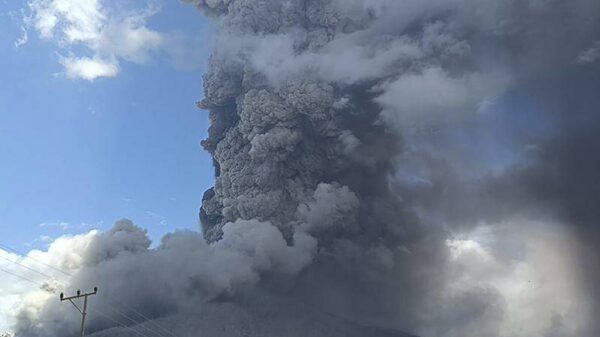A recent discovery by the James Webb Space Telescope (JWST) has added a new moon to Uranus’s system, bringing the total number of known moons to 29. The tiny moon, designated S/2025 U1, measures approximately 10 kilometers (6 miles) across and was detected on February 2, 2025, during a six-hour observation of the planet and its surroundings. This finding underscores the complexity of the Uranian system and highlights the limitations of previous explorations, including the Voyager 2 mission, which passed Uranus in 1986.
Located outside of Uranus’s rings, S/2025 U1 orbits at a distance of 56,250 kilometers from the planet’s center. Its path lies between two previously known moons, Ophelia and Bianca, within the unusual equatorial plane of Uranus. According to planetary scientist Matthew Tiscareno from the SETI Institute, “No other planet has as many small inner moons as Uranus, and their complex inter-relationships with the rings hint at a chaotic history that blurs the boundary between a ring system and a system of moons.”
The detection of S/2025 U1 is particularly significant because it is both smaller and fainter than the smallest of Uranus’s previously known inner moons. Tiscareno suggests that this raises the possibility of even more undiscovered moons in the vicinity of Uranus, further complicating the planet’s intricate satellite system.
Advancements in Astronomy
The discovery was made possible by JWST’s near-infrared NIRCam, which provided enhanced imaging capabilities. The telescope’s ability to observe faint objects has opened new avenues for understanding our solar system. As Maryame El Moutamid from the Southwest Research Institute notes, “The discovery of this moon underscores how modern astronomy continues to build upon the legacy of missions like Voyager 2, which flew past Uranus on January 24, 1986, and gave humanity its first close-up look at this mysterious world.”
The new moon has yet to receive a formal name, but traditionally, all moons of Uranus are named after characters from the works of William Shakespeare or Alexander Pope. This practice adds a poetic touch to the scientific exploration of the planet.
As astronomers continue to analyze the data collected by JWST, there is a growing anticipation for future discoveries that could reshape our understanding of Uranus and its moons. The ongoing advancements in telescope technology promise to unveil even more secrets of our solar system, pushing the boundaries of what we know about these distant worlds.






























































